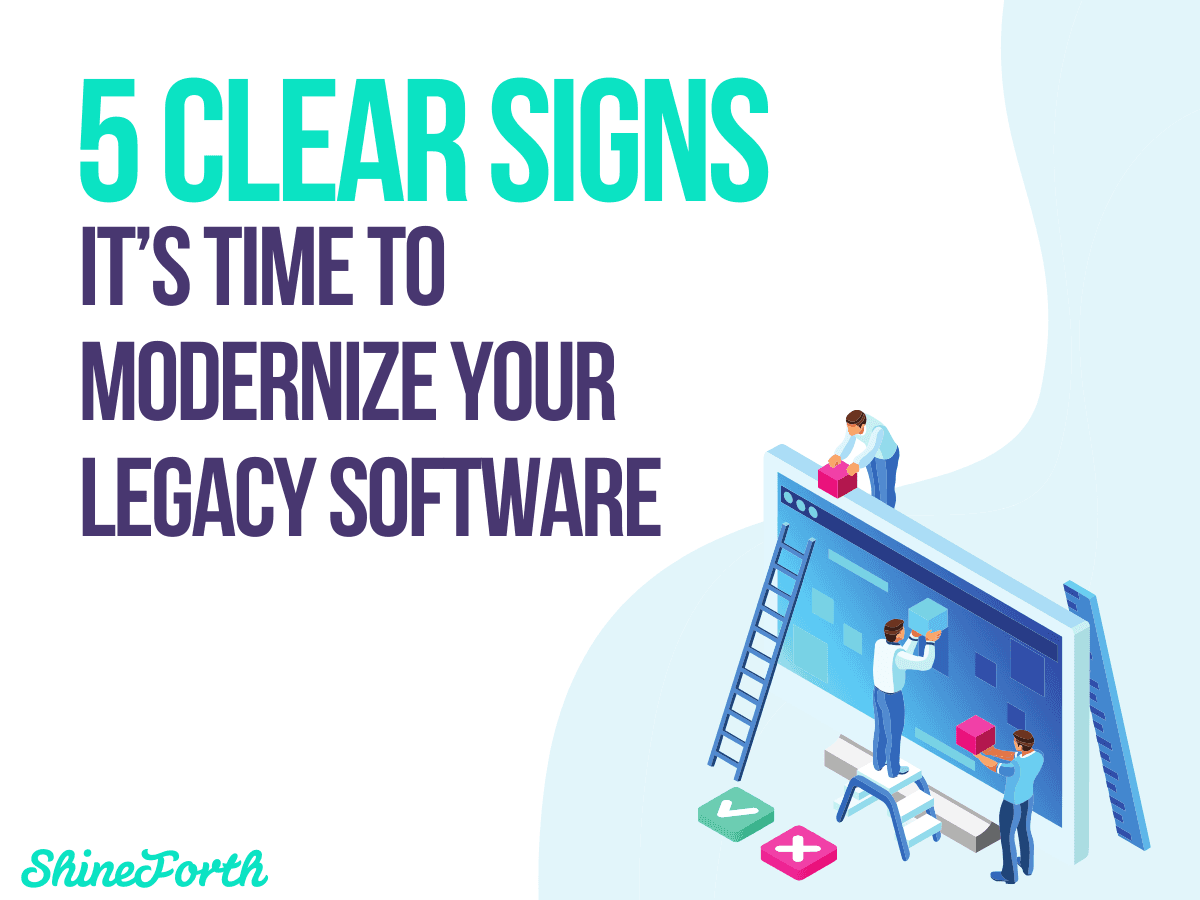5 Clear Signs It’s Time to Modernize Your Legacy Software

In today’s fast-paced digital landscape, software plays a crucial role in driving business success. However, relying on outdated, inefficient legacy systems can hold your organization back. While replacing legacy software may seem like a daunting investment, failing to upgrade at the right time can lead to lost opportunities, mounting costs, and even security vulnerabilities.
So, how can you tell it’s time for a change? Here are five clear signs it’s time to upgrade your legacy software.
1. Performance Issues Are Slowing You Down
Legacy systems often struggle to keep up with the demands of modern businesses. Frequent crashes, slow response times, and an inability to handle peak workloads can frustrate your team and disrupt workflows.
For example, imagine a customer service team relying on outdated software to process support tickets. Long loading times and frequent errors delay responses, leading to unhappy customers and missed opportunities to build loyalty.
Modern software is designed to handle increased workloads and deliver faster, smoother performance, helping your team focus on what matters most: serving customers and achieving results.
2. Lack of Support and Updates
When your software’s developer stops offering updates or support, it’s a significant warning sign. Unsupported systems no longer receive critical patches for bugs and security vulnerabilities, leaving your business exposed to cyberattacks.
Additionally, without regular updates, your software cannot evolve to meet changing needs or integrate with emerging technologies. This can result in inefficiencies and force your team to rely on outdated processes that competitors have already moved past.
Upgrading ensures your systems remain secure, reliable, and equipped with the latest features to keep your business competitive.
3. Integration Challenges with Modern Tools
Today’s businesses depend on a wide range of tools and systems to stay efficient. From customer relationship management (CRM) software to advanced analytics platforms, these tools often need to work seamlessly together.
Legacy software can be a major roadblock to integration. If your current system can’t communicate with modern platforms, your team may face manual data entry, inconsistent reporting, or inefficient workflows.
For instance, a marketing team may struggle to sync legacy email software with a cutting-edge CRM, leading to missed insights and fragmented customer communication. By upgrading to a system designed with integration in mind, you can streamline operations and improve collaboration across departments.
4. Security Risks and Compliance Issues
Cybersecurity threats are evolving rapidly, and older software is often ill-equipped to defend against them. Legacy systems may lack modern encryption, authentication, or monitoring capabilities, leaving your sensitive data vulnerable to breaches.
Additionally, outdated software may fail to meet current compliance standards in industries like finance, healthcare, or e-commerce. Non-compliance can lead to hefty fines, legal challenges, and damage to your company’s reputation.
Upgraded software ensures robust security measures are in place and keeps your business compliant with industry regulations, giving you peace of mind and protecting your brand.
5. High Maintenance Costs
If you find yourself pouring more money into maintaining your current software than it’s worth, it’s time to consider an upgrade. Legacy systems often require specialized expertise to repair, and parts of the system may no longer be readily available.
Over time, the cost of keeping your old system running can far exceed the cost of investing in new software. Modern solutions are designed to be more efficient, scalable, and cost-effective in the long run.
Why Upgrading Is Worth It
Upgrading legacy software is more than just a technical change—it’s an investment in the future of your business. Modern software solutions offer:
- Increased efficiency:
- Automate repetitive tasks and improve workflows.
- Scalability:
- Handle growing business demands without performance issues.
- Enhanced user experience:
- Intuitive interfaces reduce training time and improve adoption.
- Cost savings:
- Lower maintenance and improved efficiency save money over time.
At ShineForth, we understand that transitioning from legacy systems can feel overwhelming. That’s why we specialize in creating custom software solutions tailored to your unique needs. Our team works closely with you to ensure the upgrade process is smooth, secure, and aligned with your business goals.
Let’s Move Forward Together
Don’t let outdated software hold your business back. Contact ShineForth today to discuss how we can help modernize your systems and set your business up for success.
Ready to take the first step? Reach out now for a free consultation.